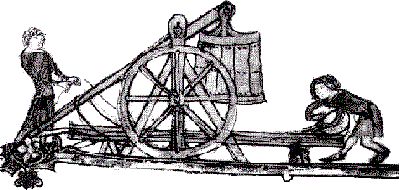
|
Part 5 |

|
Part 5 |
|
This is one of a series of pages of
Medieval and Renaissance illustrations of trebuchets. To avoid problems
with historical interpretation (& copyright!) as much as possible,
I have chosen to use pictures which seem to be plausibly contemporary
with the devices being illustrated. I have also tried to avoid what
seem to be obvious fantasy pieces. . |
| No. 17 - Trebuchet and Gunpowder |
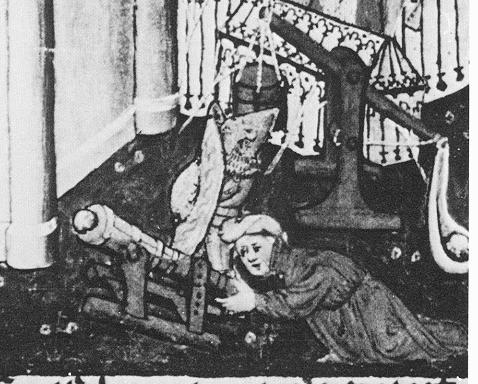
The gun seems to be the starring feature in this picture, with the
trebuchet receiving more of a "representation" than an accurate
depiction. Even so, the familiar features (beam, bucket, axle, winch
and sling) are all there.
| No. 18 - Milemete |
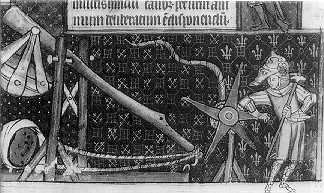
|
A drawing of a "rustic" machine from Walter de Milemete, early 14th Century. (Christ Church, Oxford, Milemete Ms 92, f. 67.) As in some other examples shown earlier in these pages, this trebuchet has some odd features and proportions.
On the positive side, in addition to the usual components (rope sling cords, smooth cloth-like pouch, tapering beam and large winch) this image also has a trigger mechanism just visible at the extreme tip of the beam. |
| No. 19 - "Minimal" trebuchets |
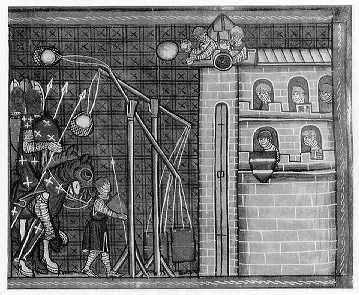
|
Here is a pair of very simply represented trbuchets - a lot like the even simpler ones shown in Illustration No.7.
British Library MS Royal, 16G vi, f. 388.
A re-enforcing band can be seen around each weight "barrel". |
| No. 20 - "Bucket" Trebuchet |
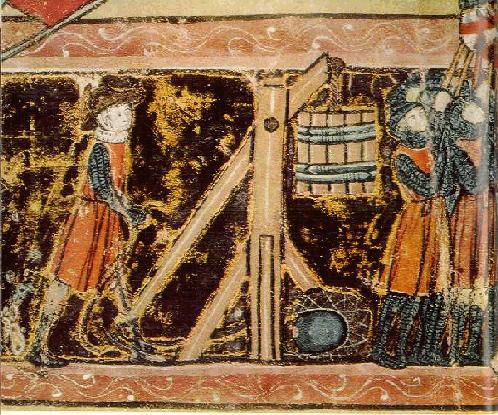
Bibliotheque Nationale de France
| No. 21 - Tower-top Trebuchet |

This drawing, if somewhat "stylised", is interesting because it appears to show a machine with a fixed weight on the beam end as well as a hanging weight. This also appears in Illustration No.14
Also noteworthy is that this drawing shows the trebuchet's curved weight "propped" out rather than hanging vertically below its attachment point to the beam. Unfortunately, no method of achieving this is shown. This propping has the advantage of giving the weight a higher and straighter fall, thus increasing the trebuchet's power for no added size or weight.
As with many of the "Eastern" machines shown on these pages, this one has multiple bracing timbers, although the drawing also shows a large bearing block holding the axle.
The drawing from which this is taken appears intended to show the various types of trebuchets used.
For a view of the whole picture Click here.
(Scientific American, July 1995, "The Trebuchet")
| - NAVIGATION -
|
||||
|---|---|---|---|---|
 |
||||
 |
Previous | Next |  |
|
| Page |
|
Page | ||
